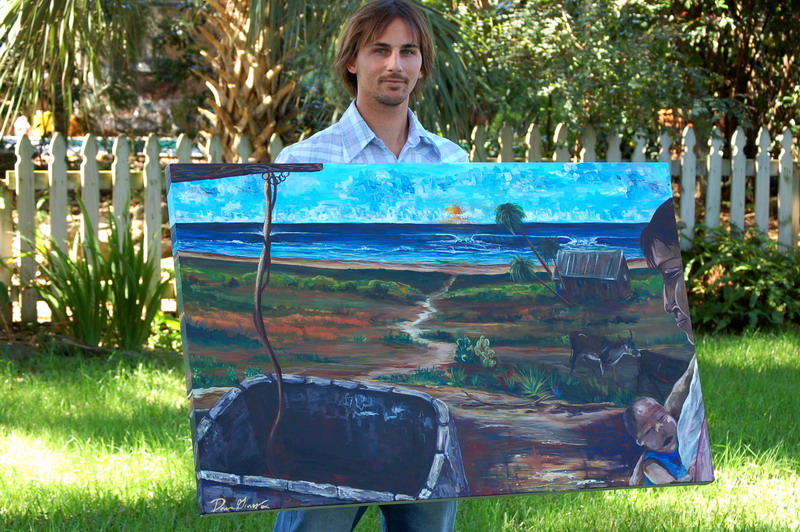|
Agua Viva - Water for Life A new well for La Pita, Nicaragua By Danny Cruden (Updated July 21, 2007 with pictures of the water tower and bicycle powered pump. The well is now done and fully functional.)
|
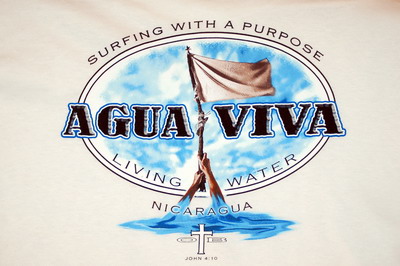 |
|
"Agua Viva" is a special project to provide a drinking water well for the remote village of La Pita in Nicaragua. The first contacts we had with this village occurred last summer (2006), when several of us visited the village during one of our "Surfing with a Purpose" mission trips to the area. The next day we returned to the village with 750 pounds of food and divided it among the local families. We also provided children's vitamins, arthritis medicine for an old man, clothing, dental products, toys, sandals and Bibles (printed in Spanish of course). While we were visiting the village, one of the fathers pointed out that all of their drinking water came from open holes dug in the clay near the river. Every time it rained, muddy water just washed in and contaminated their water supply. Based on what we saw that day, several of us decided to commit to a project to provide La Pita with clean drinking water. The project is planned for completion during the first several months of 2007 (their dry season), before the heavy rains make work impossible. The first group will be going to the area to get things organized in early February. The project will consist of a centrally located well with a hand pump or a rope and bucket as is typical for rural community wells in Nicaragua. Since there isn't any electricity or heavy equipment in the area, all work is done by hand. It may take over a month to build the well. We plan to hire knowledgeable locals to do most of the actual labor since there is a lot of very hard volcanic rock in the area. After the well is completed we also plan to provide the local villagers with educational material about small-scale farming, and provide them with tools and supplies to cultivate their land. It's incredible how much difference something like a few fruit trees can make for each family since malnutrition is a major problem in the rural communities of Nicaragua. May 5, 2007 - Thanks to generous contributions and some hard work by many people, the La Pita well is nearing completion. The main shaft, over 60 feet deep and about 8 feet in diameter, has been completed and the side walls have been cemented. The protective structure around the base will be completed soon (if it hasn't already). The pictures of the well (below) were taken in late April, 2007. Join Danny on a mission or mission/surfing trip to the Las Salinas, Nicaragua area. You can read some more about the
Surfing with a Purpose trips at the following link: http://surfpurpose.com .
Click on the "Mission Overview" link on the right of the Surf Purpose webpage. Contact Danny Cruden at deecrude@hotmail.com
for further information. |
Danny holding the the famous La Pita Well painting donated to the project by Dawn Gray of Kitty Hawk, North Carolina. Dawn is now
a full time teacher for the children of Los Salinas, not far from the Popoyo Surf Camp in Nicaragua.
| Above are some pictures taken in the village in 2006, the first day we delivered the food and supplies. We also gave some balloons to the children. I don't think they had ever seen them before. The hole in the ground near the river in the bottom right hand picture is their current drinking water supply. |
La Pita Well - Almost done - April 2007
(written by Ross)
|
These pictures were taken of the La Pita well in late April, 2007. The main bore is complete and lined with cement. The protective base hadn't been started yet when Danny was there. That's Danny on the far right, so I don't know who was taking the pictures. I captured these pictures from Danny's web site and just know bits and pieces about what is going on. I may have gotten some things mixed up or wrong. Danny can fix the text after he returns from Nicaragua in August. |
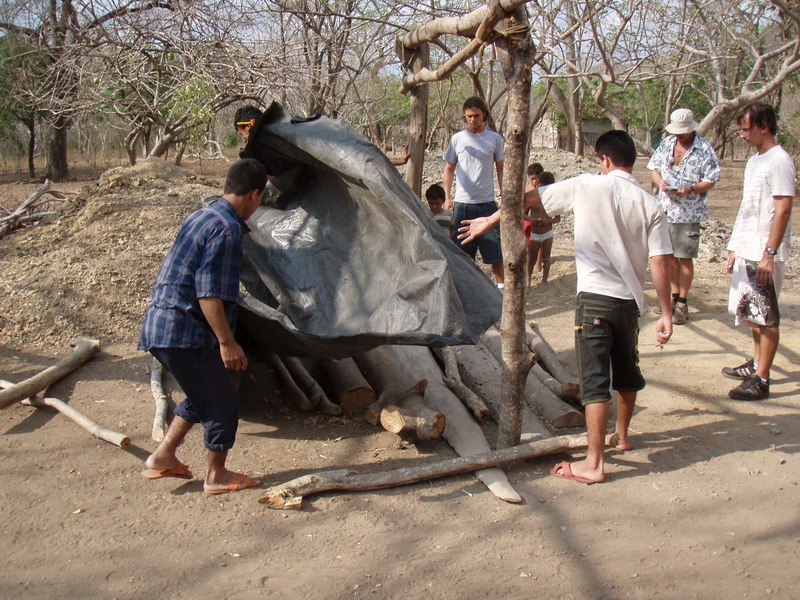
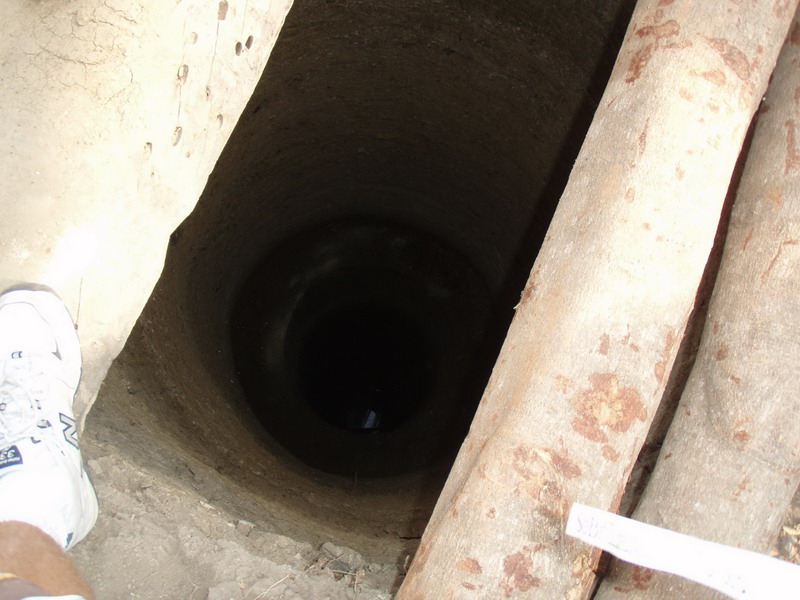
|
The entire job was done by hand since they don't have power tools or heavy equipment in this area. The well shaft is over 60 feet deep and was about 8 feet across while being dug. They worked their way down the shaft with picks and shovels, and hauled the rock and dirt back up by bucket. Most of the dangerous work was done by a team of 3 people that specialize in digging wells. The ground here is rocky and hard. |
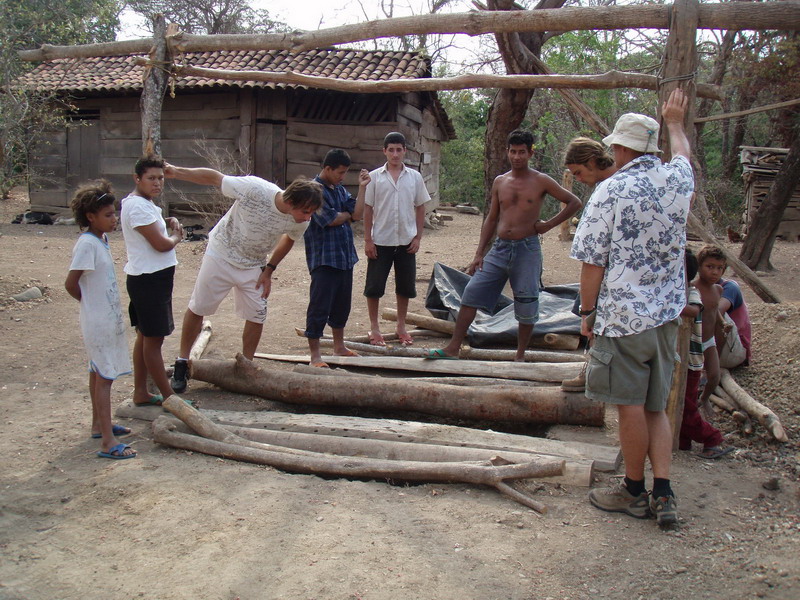
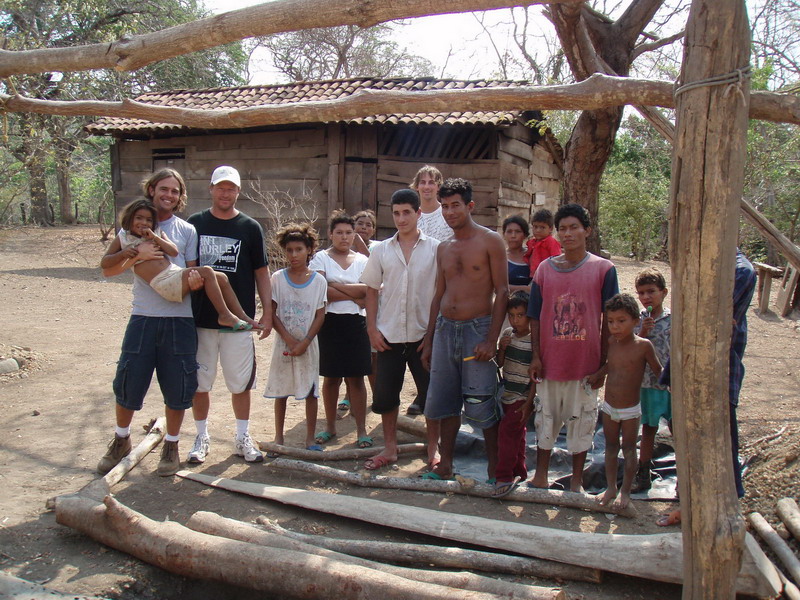
|
The structure in the background that looks like a barn in the above picture, is probably a pretty nice house for this area. |
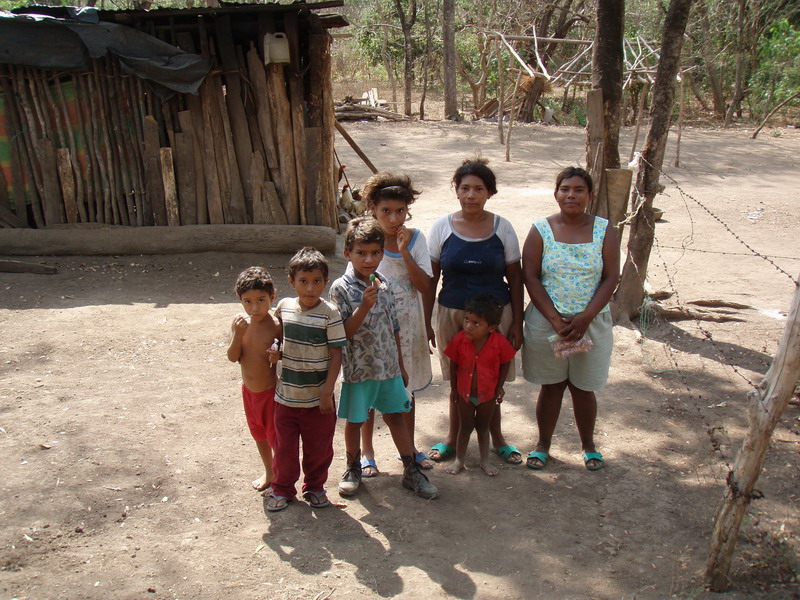
|
The structure in the background of this picture is more typical of the local homes I have seen in small remote villages like La Pita. A family of 10 or more will live in a structure like that. In many cases they have to take turns sleeping at night since there isn't room for everyone. |
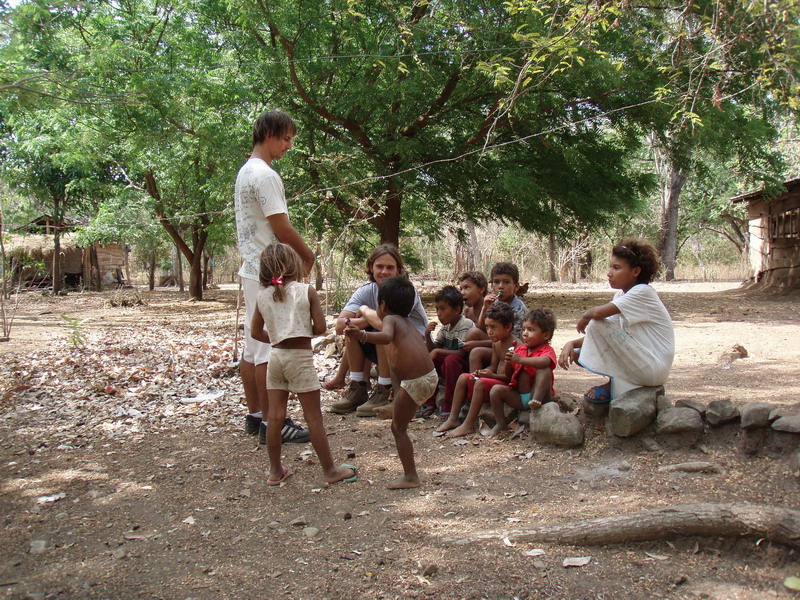
|
There is a more noticeable difference between Nicaragua and Costa Rica than between Costa Rica and the USA. Wages in Nicaragua are a fraction of what they are in Costa Rica. A laborer will make about 30 cents an hour for a 10 hour day of hard work. It gets pretty hot during the day. I hauled water from a well to mix concrete for one of the floors they poured two years ago. After about 3 hours I could hardly haul up the 5 gallon buckets. I don't think I would last for a single 10 hour day in that heat. Many Nicaraguans cross into Costa Rica to work for higher wages than they could hope to make at home. |
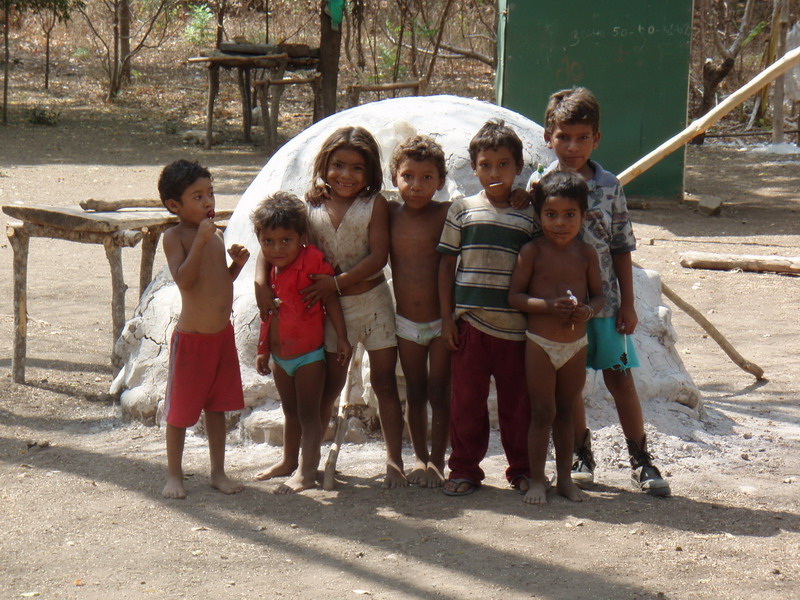
|
Another difference between Costa Rica and Nicaragua is the number of children you see. In Costa Rica, all children attend school up to a certain age, and they usually wear white and blue uniforms. Thus, during the week you don't see a lot of kids running around during school hours. In Nicaragua there are always lots of kids running around. Lots and lots of kids. That is the first big difference I really noticed the next time I went to Costa Rica. |
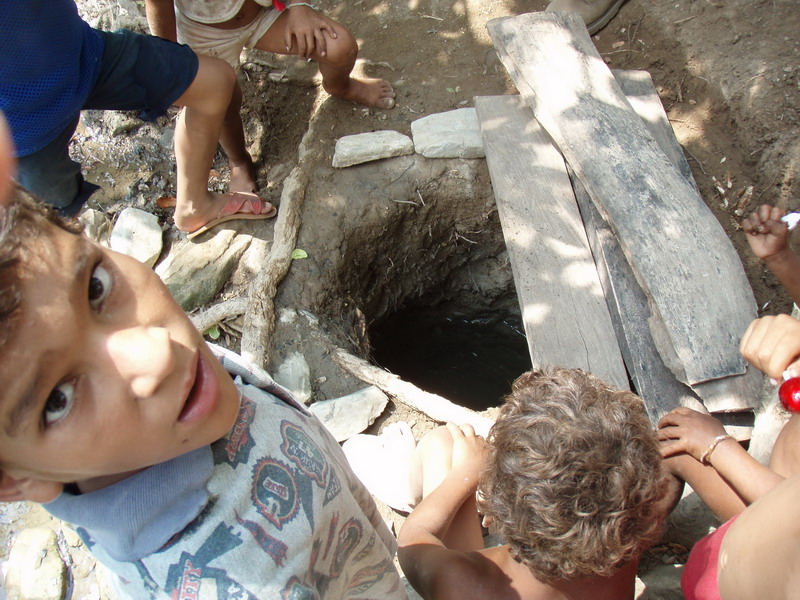
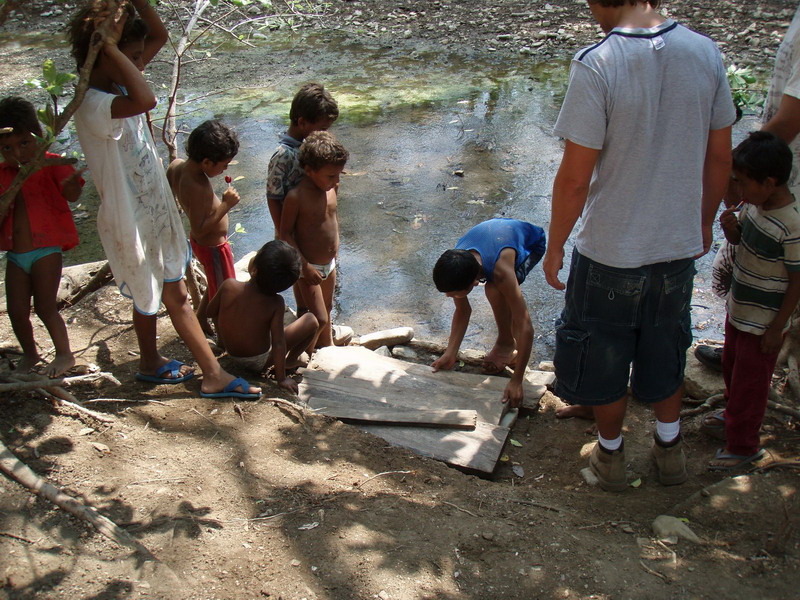
|
The above two pictures were taken last summer. These are the holes in the ground which provided the village drinking water supply. When in Nicaragua always drink bottled water, and don't use the ice. Now you know why they tell you that. |
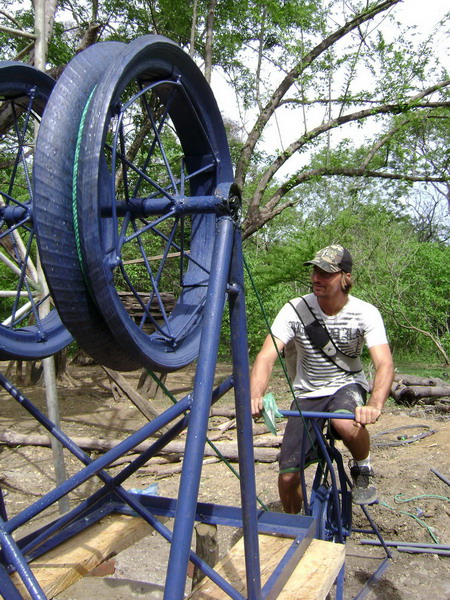
This is the bicycle powered water pump. The isn't any electric power anywhere near this place.
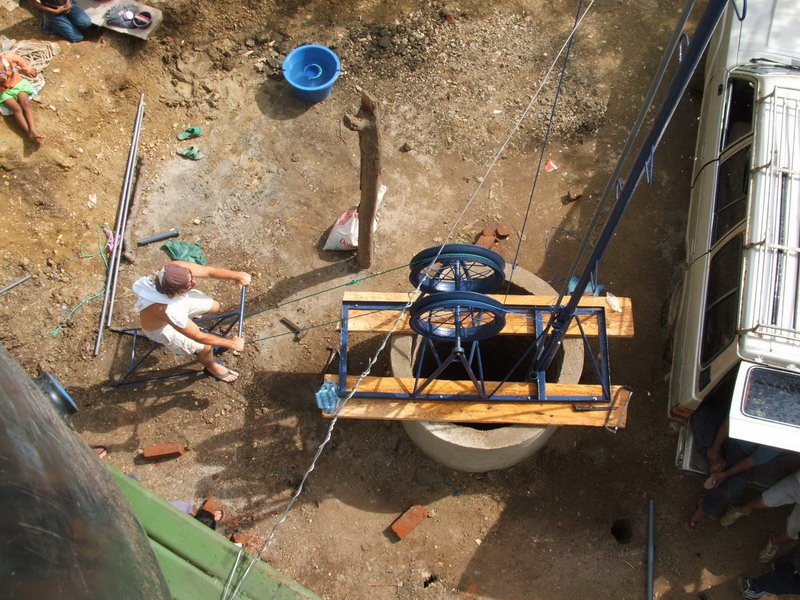
This was taken from the top of the water tank tower after it was set up. I can't find a pic of the finished tower.
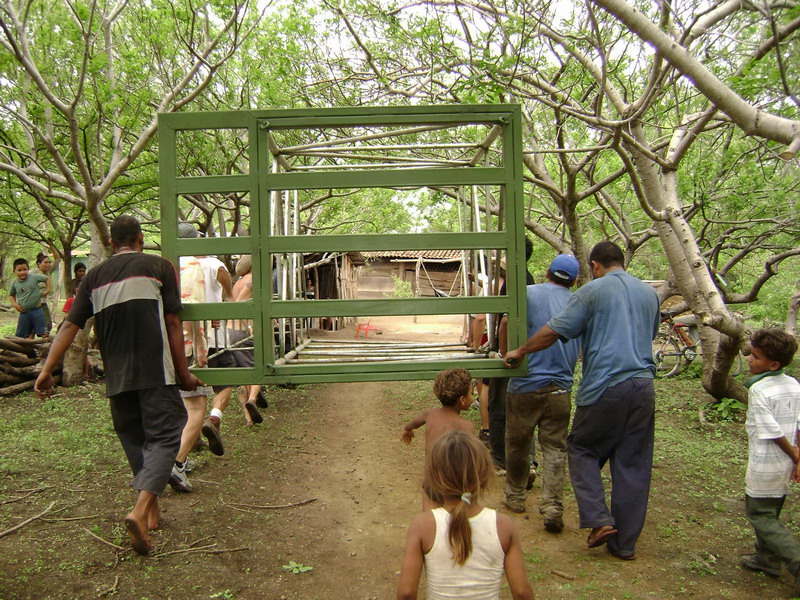
This is the tower being carried into place for set up.
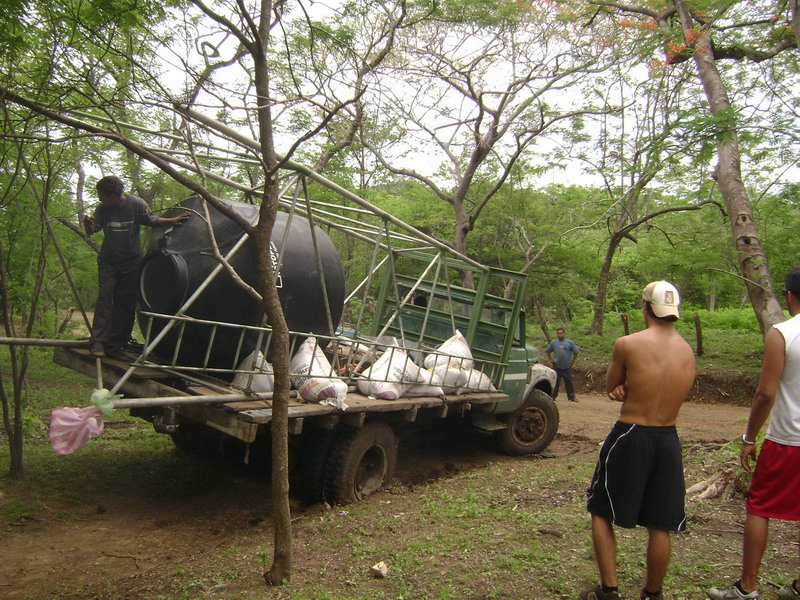
The tank sits on top of the tower. I have seen pics of them muscling up the tower and tank, but couldn't find them a second time.
Everything is done by hand. Someone mans the bicycle
pump to lift the water up into the tower and then they have running water
until the
tank goes empty. It looks like real good exercise to fill the tank.
